I’ve been seeing more and more Arbor snowboards out on the mountain, and I’ve always been drawn to their clean designs and exposed wood top sheet aesthetic. Naturally, I jumped on the chance to give Arbor a look during the 23/24 snowboarding season out here in Utah.
This is my 3rd season in Utah, and it only took me one season to realize I’d benefit from a snowboard quiver vs. one do-it-all tool. I asked the Arbor team to point me toward a powder tool and we landed at the Satori Camber + their Cypress bindings as that new tool!
Anyway, enough background story. Let’s get into the Satori Camber review!
Design
The Satori Camber is handsome, and there’s no question about it. It has a dark top sheet with lighter wood pops peeking through. I’ve gotten more than a handful of comments about the board’s looks. The base also has a colorful, artistic treatment that makes it easy to spot the Satori on a rack of boards pretty easily. The coolest part of the base is the transparent Arbor emblem that allows you to get a glimpse at the Bamboo Powerply core.
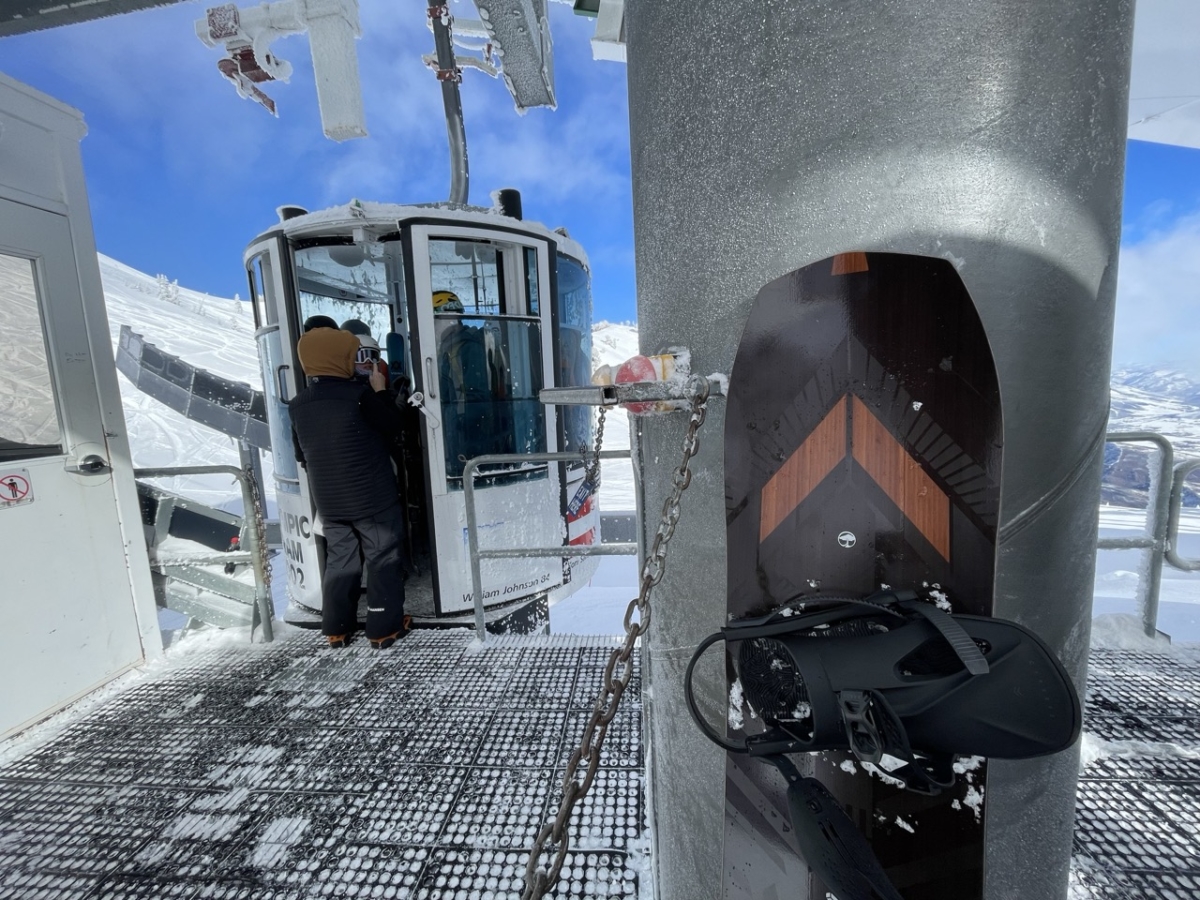
Looks aside, the Satori Camber is packed with tech. It is one of the funkiest board designs I have ridden to date, in the best way possible – but certainly not the most funky out there, looking at you surf-style snowboards! Looking at Satori’s vertical side profile (see below image) is the best representation of what I mean. Arbor’s Grip Tech + Fender Tech are the leading features of this design.
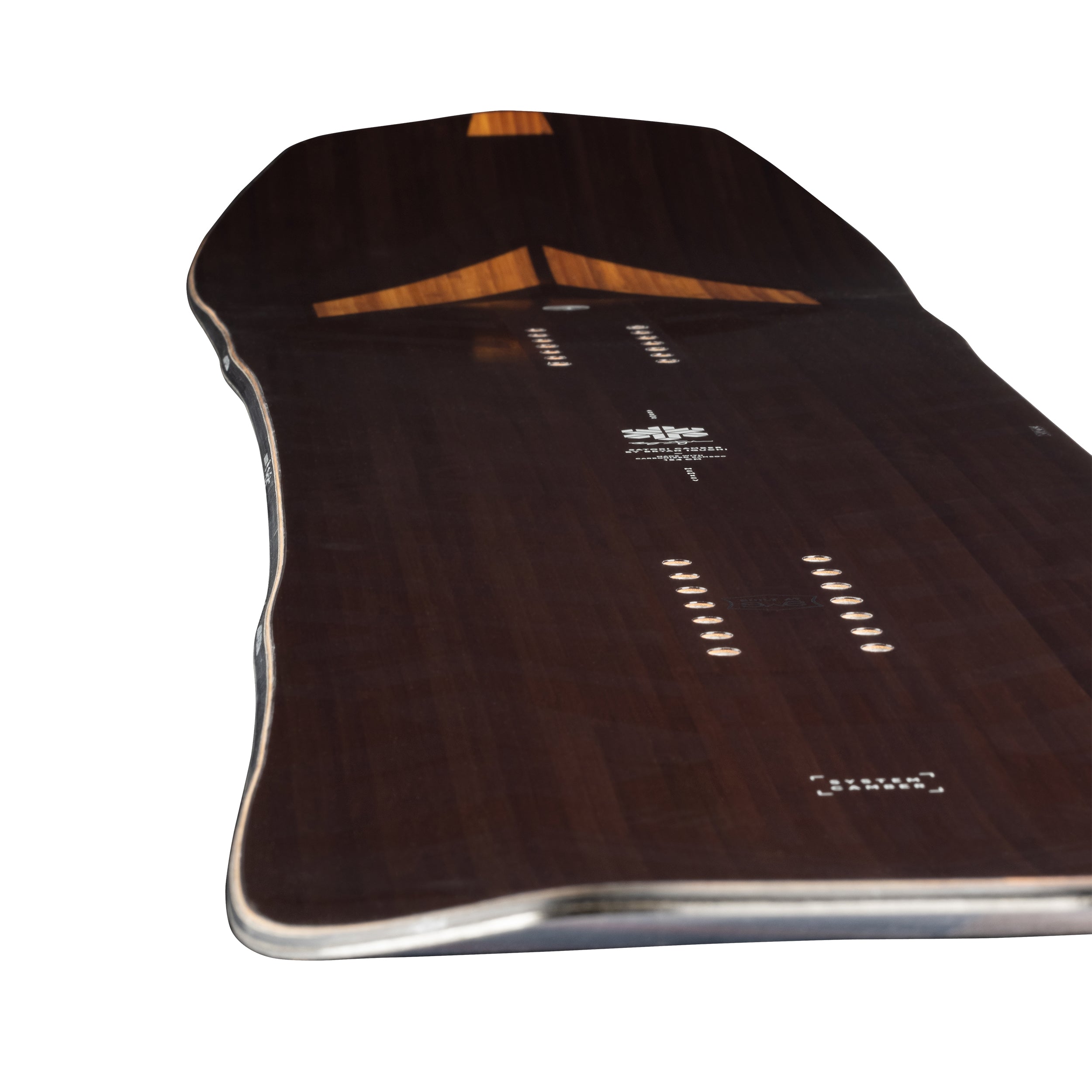
The grip tech adds extra control when carving via the protruding contact points that line up with binding placement.The fender tech adds 5º raised edges near the nose and tail of the board to add a bit more float in powder. Snowboarding Mag did a great job breaking down this technology in their writeup here.

Now that you know some of the tech, let’s dive into the ride feel!
Ride Characteristics
Arbor recommends you ride this board 3-5cm shorter than your usual board, which was a new one for me. I was super stoked to get onto something shorter to see how it felt! Overall, the Satori is a super fun ride. When first getting used to the shorter profile, it admittedly felt a little twitchy and unstable at speed. However, it only took a few laps to get used to the quick maneuverability of the board. After a full day of riding, I was ripping groomers just like one of my stiff, longer all mountain boards!
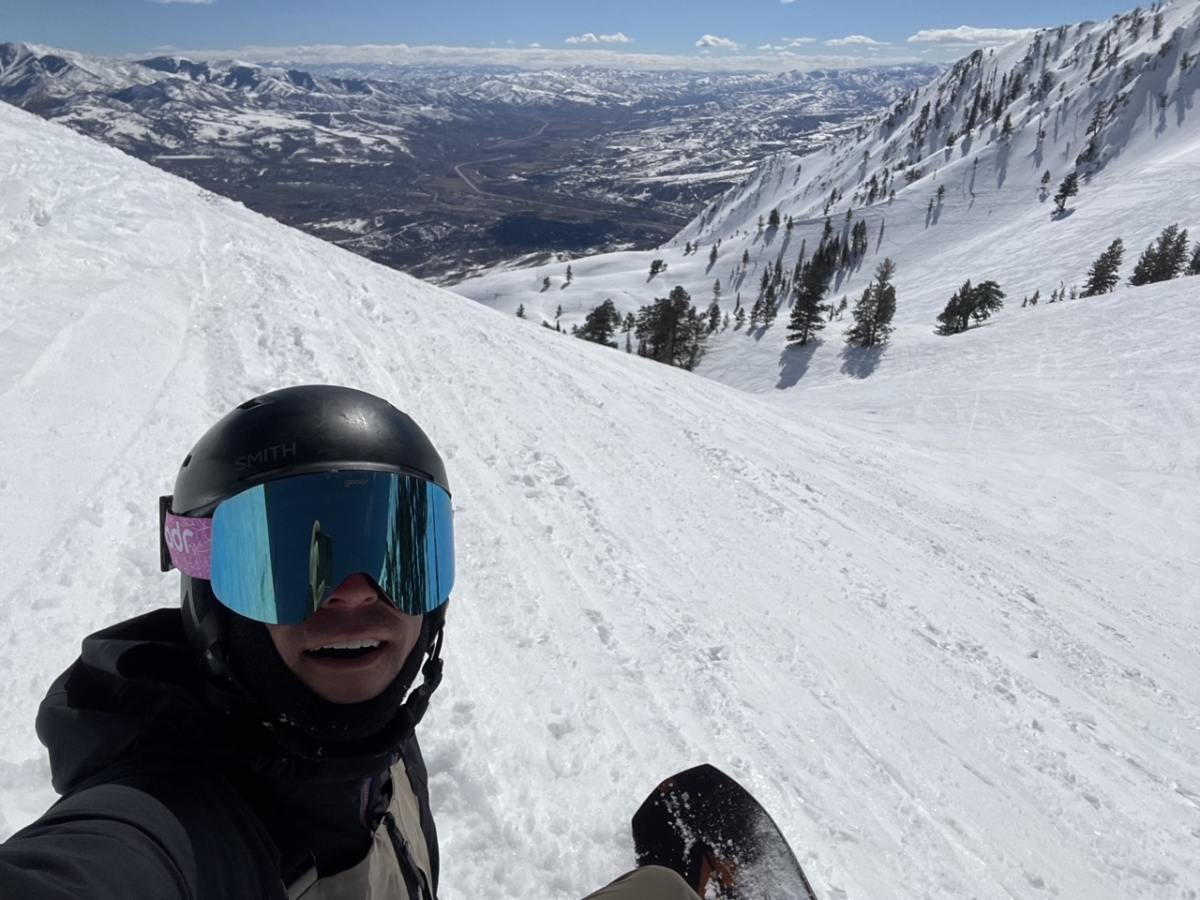
Learning curve aside, the Satori shines in powder. It floats without effort due to the shape and board tech discussed above, turns on a dime to the shorter profile, and crushes tight tree and mogul runs with ease. While riding the Satori on a powder day, I had a skier friend tell me he couldn’t follow me anymore due to all the powder I was kicking up from pow slashing my way down the runs. It is just too easy to flick the tail out on the Satori. Switch transitions are easy and buttery.
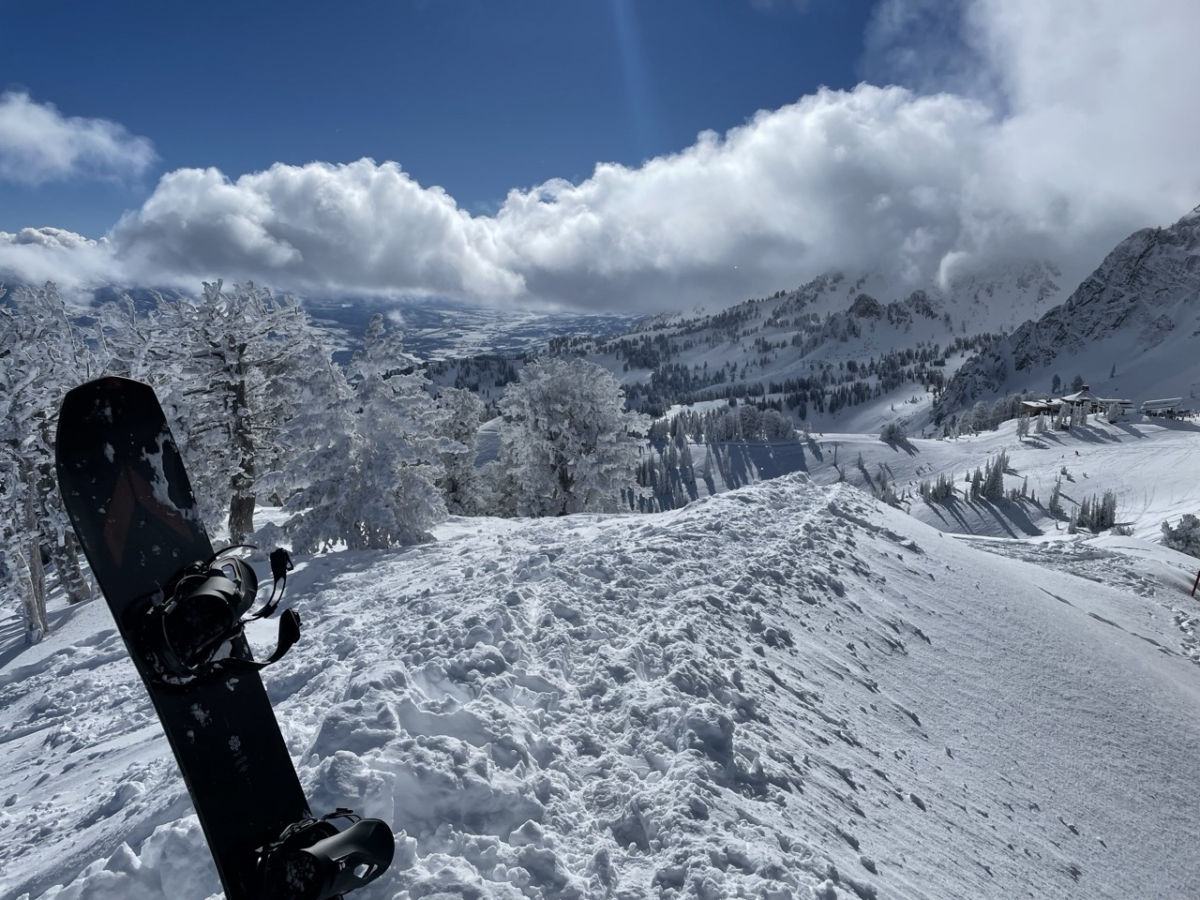
All in all, the Satori Camber carves just as well as an all mountain cruiser, but offers so much more than an all mountain board on everything off the corduroy.
I was iffy at first but quickly turned into a believer.
When to Ride It
Honestly, when I first got the Satori, I thought that it was a niche board in my quiver and I’d really only ride it on true powder days, but it actually became my second most used board in my quiver. I enjoyed riding it so much that I took it out on days I didn’t think I’d reach for it.
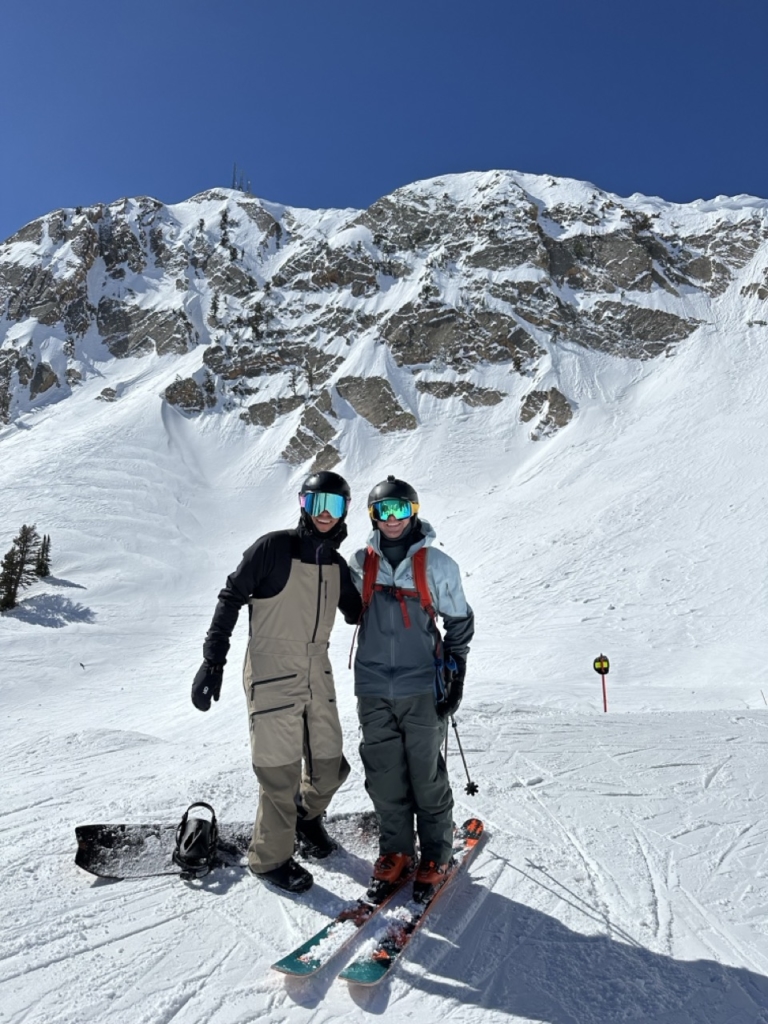
That said, here are the areas I think it rides best. The number one use is pow pow. It rips the freshies the best of all my boards. The number two use is a do-it-all day where you’re switching from groomers to hike-to terrain and back again. It is light, nimble, and fun for all mountain.
When I don’t recommend riding it is with a bunch of skiers. As much as it pains me to say th
is, I am usually the lone boarder in a group of skiers. So keeping up is critical, and the Satori just doesn’t have the full speed potential of some of my longer, stiffer boards. Don’t get me wrong, it can move if you need it to… just not quite as fast as some others.
I don’t spend much time in the park, so I can’t comment there, but something tells me the Satori wouldn’t be your first choice for features other than some rollers and jumps.
Value
For a board that I expected to be more specialty than it turned out to be, dropping $650 on this ride is well worth the investment into your quiver. When writing this review, the board could be had for about $110 off MSRP, making it a pretty sweet deal for a pretty sweet ride.
That said, even with the ability to tackle and ride more terrain than expected, I do still believe it falls into more of a specialty board category, and would likely be best for someone looking to add a 2nd or 3rd board to their quiver.
Design
At first glance, Arbor’s Cypress bindings have a traditional binding look. A no-frills design with ratcheting toe and ankle straps. There is no automatic nature in these bindings – they’re all manual. What you lack in step-in capabilities, you gain in full control of tightness and ride feel.
There are a few features that make the Cypress bindings special. I really appreciated the metal buckles, which Arbor used Cast Aluminum for a light but durable design. They feel solid and have a great tactile feel when ratcheting. Other brands cut corners with the buckles and use plastic, which introduces flex into the system when all I want is control. Arbor also used extruded aluminum for the heel cup, which gives you power through fast corners and hard-charging lines.

Additionally, Arbor used plant-based materials to produce the straps for the Cypress bindings, replacing the harmful petrol-based materials used by other manufacturers. Kudos to Arbor for upholding their commitment to sustainable material use.
Beyond those two features, many of the rest are pretty standard and expected in modern binding tech:
- EVA footbed
- Adjustable heel cup
- Adjustable angle highbacks
One final note is comfort. The large, bio-based ankle strap does a great job applying even pressure across the ankle. I notice I can have a lot of arch pain when bindings do a poor job of distributing pressure, and I am happy to say that is minimal with the Cypress bindings.
Ride Characteristics
The Cypress bindings do a great job balancing stiffness for power and control in key areas while enabling some flex in other areas. The aluminum heel cup locks your foot in place without flex, so you know you can drive through your heels when carving or dropping your favorite cliff bands. The highback is where you can find yourself a little flex to help with rotations, tight turns, and switch transitions.
I have not found myself wishing for more flex when riding these bindings, but it is possible my riding style doesn’t call for it. I ride as much Utah powder as possible, stick to the tree runs, and rip groomers when the day calls for it.
Overall, the Cypress bindings feel stable and controlled no matter the terrain.
Value
At $299, the Cypress bindings land on the mid-to-high end of the spectrum as far as bindings go. I do think you get what you pay for, as Arbor didn’t cut corners and use plastic when all you want is some metal. I expect these to hold up for many seasons to come, which makes that investment an easier decision.
That said, at the time of this review, the Cypress bindings can be had for $60 off MSRP, putting them at a very competitive price for what you get.

Leave a Reply